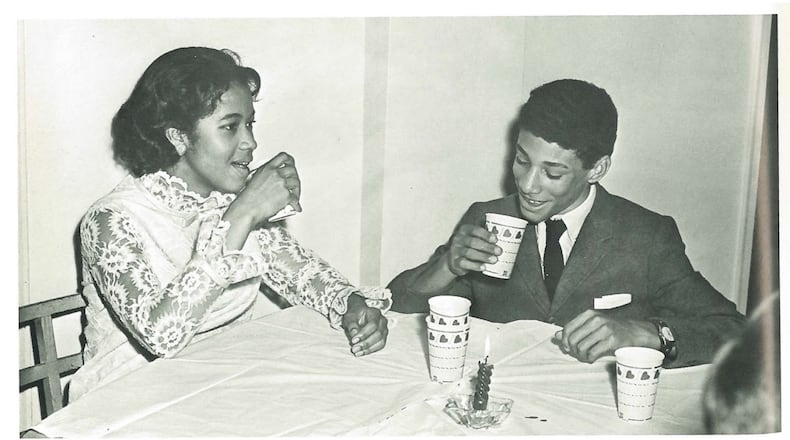Six years after nine black teens broke the color line and integrated four Atlanta public high schools, seven other students made a similar but less heralded walk into history – becoming the first African-American students to attend the Westminster Schools, an elite private school in Buckhead.
Their breakthrough did not garner the media attention that their public school counterparts earned a few years earlier, but neither did they face a gauntlet of protesters when they began classes at the leafy 180-acre Westminster campus on West Paces Ferry Road in 1967.
However, the entry of black students into one of the south's most prestigious independent schools was not without struggles and challenges, as detailed in a new book "Transforming the Elite: Black Students and the Desegregation of Private Schools" by Michelle A. Purdy, a Mississippi native and a professor at Washington University in St. Louis. The book is published by the University of North Carolina Press.
Purdy’s book examines what led private schools like Westminster, which were not mandated by law to admit black children, to finally do so, and who were the students who led the way, the fearless firsts.
“There are so many firsts out there we just don’t know,” said Purdy in a phone interview. “What does it mean for whom these schools were not intended to be educated in these spaces? What has it meant for more women, more African-Americans, more Latino and more Hispanic-Americans to have access to these institutions? They are literally changing the face of these institutions. I think it is important for institutions to know who their firsts were, and those in the scholarly world to understand what they faced.”
The first black students at Westminster encountered blatant racism and jarring celebrations of the south’s racist past, including an annual fundraiser patterned after a “slave” auction and a junior-senior Old South ball in which students were told, “the foyer and front lawn will be decorated as a southern plantation…gentlemen may wear either old Confederate uniforms or tuxedos.”
Dr. Michael McBay, who went onto Stanford and UCLA medical school, recalled his first day as an eighth grader at Westminster in 1967 when a group of boys, including football players, surrounded him. At first, he assumed they were welcoming him, he told Purdy, “but they proceeded to humiliate, hit, push, shove, punch and haze me into hysterics such that I ran to the bathroom to hide and cry.”
Small slights also reminded black students that they were seen as outsiders. Westminster was still a boarding school when it desegregated. Before two black girls moved into the dorms, the school gathered its white boarders to explain while the pair might be different, there was no reason to fear them.
One of the interesting observations in the book is that after the leaders of Westminster agreed to admit black students, they did not necessarily consider or plan for the students’ daily experiences once at the all-white campus. “There did not seem to be the notion of preparation that say would exist from a current perspective,” said Purdy.
While Westminster opened its archival materials to Purdy, it fell to her to track down the black students and she ended up reaching 10 of them. What she found were accomplished professionals who went from Westminster to elite colleges and successful careers, but who had not regarded themselves as history makers.
“They are all in their 50s and 60s. It was hard for some of them to talk with me,” she said. “These are folks who were not in the national spotlight. I think there has been a reconciling in their own minds about their experiences and the pros and cons. And, certainly, one of the pros was being well prepared for higher education.”
For example, until she interviewed him for the book, Ron McBay, who went onto Princeton, told Purdy he never saw himself as an historical actor for desegregating Westminster as a fifth grader in 1968, a year after his older brother enrolled. Purdy heralds McBay and his cohorts for what she calls their courageous navigation of a difficult terrain.
“They were in a very different environment. And there weren’t many of them at Westminster. Over the first five or six years, there were 35 black students in a campus of 1,500,” she said. “As these black students desegregated historically white private and public and parochial schools, they were countering notions of black inferiority that were held by white educators in public and private schools.”
Purdy has discussed her research with some Westminster administrators, faculty, staff and students, and will speak there at a public event on March 21.
Today, students of color make up 30 percent of Westminster’s enrollment. Those seven students in 1967 created a path that many more students have followed, and the campus changed as a result.
A white student at Westminster when the “fearless firsts” arrived told Purdy he had held racist views. But he said his black classmates “changed the way I felt, thought, behaved and believed about people ever since. I never knowingly, consciously made the mistake again of assuming something about someone strictly because of race.”
About the Author
The Latest
Featured




